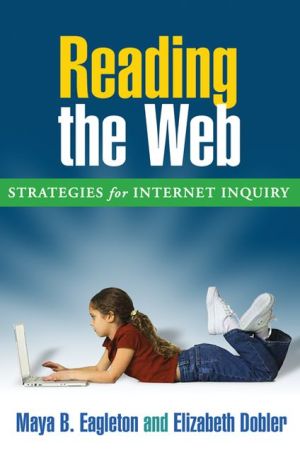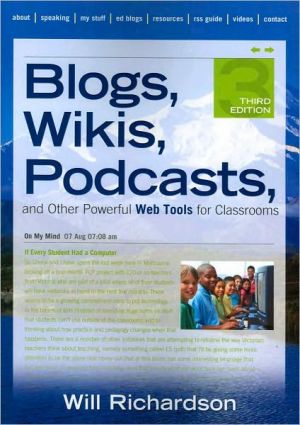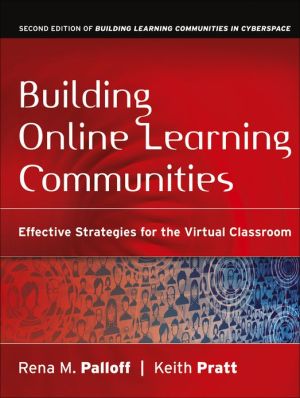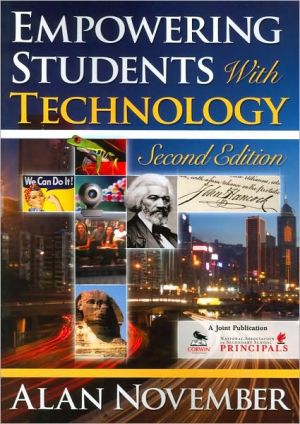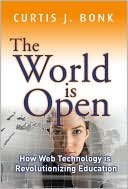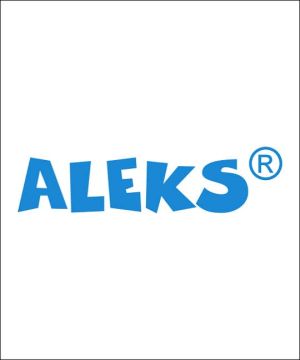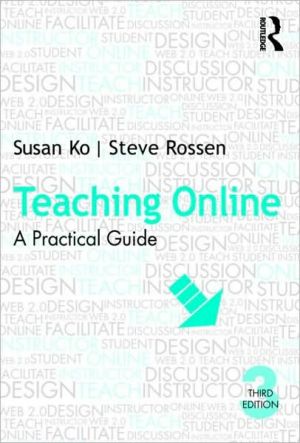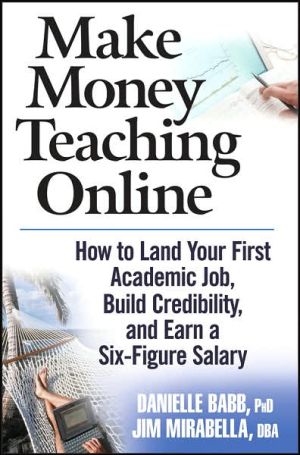Reading the Web: Strategies for Internet Inquiry
Packed with ideas and instructional activities that cut across all content areas, this engaging book provides a comprehensive framework for promoting vital Web literacy skills in grades 3-8. Teacher-friendly special features include helpful graphics, sidebars, practical tips, and nearly 100 reproducibles. Using a research-based, classroom-tested model of Internet inquiry, the authors explain the "whats," "whys," and "how-tos" of helping diverse learners:\ \ *Locate useful information sources...
Search in google:
Packed with ideas and instructional activities that cut across all content areas, this engaging book provides a comprehensive framework for promoting vital Web literacy skills in grades 3-8. Teacher-friendly special features include helpful graphics, sidebars, practical tips, and nearly 100 reproducibles. Using a research-based, classroom-tested model of Internet inquiry, the authors explain the "whats," "whys," and "how-tos" of helping diverse learners: *Locate useful information sources on the Web*Navigate the contents of a website*Critically evaluate what they read online*Synthesize the results of an Internet inquiry*Express new knowledge in their own words Note: The authors' website (www.ReadingTheWeb.net) features additional helpful materials: Web links keyed to each chapter, copies of the reproducibles in the book, a complete reference list, and more. Children's Literature This timely text should find an audience with teachers looking for a structure through which to frame their students work on research and the Internet. The authors begin with the necessary background on the use of the Internet in American schools, households, and workplaces, and employ this information to anchor the focus of the book--The QUEST Model of Internet Inquiry--to student learning and related literacy issues. The rest of the book focuses on the QUEST model; this large section begins with a consideration of preparation. After dealing with questions concerning how prepared the school and the teacher is in terms of technology and background knowledge, the authors break down the word QUEST into its signature parts. Q stands for questioning, and there is solid discussion of the need for students and teachers to understand those techniques. U is for understanding resources, and this becomes a very informative section on how to know which Internet sources are valid and reliable. E is for evaluation, and the section focuses on its importance and how we teach students to evaluate. Synthesizing is the highlight of the next section, and, as the authors note, the way in which teachers model approaches to this skill are difficult yet necessary. Finally, T focuses on how to transform information into a project or paper in a manner that shows maximum student learning. This book will be a solid resource for classroom teachers (especially with the large number of handout models offered in each chapter) and the vast number of anecdotes of success interactions with this approach certainly underscores that. Reviewer: Jean Boreen, Ph.D.
I. Understanding Print and Web Literacies1. Learning How to Learn2. Becoming LiterateII. The QUEST Model of Internet Inquiry3. Preparing for the QUEST4. Questioning5. Understanding Resources6. Evaluating7. Synthesizing8. Transforming9. Reflecting on the QUEST
\ Children's LiteratureThis timely text should find an audience with teachers looking for a structure through which to frame their students’ work on research and the Internet. The authors begin with the necessary background on the use of the Internet in American schools, households, and workplaces, and employ this information to anchor the focus of the book--The QUEST Model of Internet Inquiry--to student learning and related literacy issues. The rest of the book focuses on the QUEST model; this large section begins with a consideration of preparation. After dealing with questions concerning how prepared the school and the teacher is in terms of technology and background knowledge, the authors break down the word QUEST into its signature parts. Q stands for questioning, and there is solid discussion of the need for students and teachers to understand those techniques. U is for understanding resources, and this becomes a very informative section on how to know which Internet sources are valid and reliable. E is for evaluation, and the section focuses on its importance and how we teach students to evaluate. Synthesizing is the highlight of the next section, and, as the authors note, the way in which teachers model approaches to this skill are difficult yet necessary. Finally, T focuses on how to transform information into a project or paper in a manner that shows maximum student learning. This book will be a solid resource for classroom teachers (especially with the large number of handout models offered in each chapter) and the vast number of anecdotes of success interactions with this approach certainly underscores that. Reviewer: Jean Boreen, Ph.D.\ \ \ \ \ From the Publisher"This book presents a well-organized, example-rich framework for teaching students to engage in Internet inquiry, the newest frontier in research skills. 21st-century teachers preparing their elementary or intermediate students to compete in an increasingly technological world will find this book an invaluable resource. Moreover, because the authors' QUEST model is rooted in foundational research on learning and literacy development, its applications transcend the domain of Internet literacy, supporting students' development of higher-order comprehension skills. The QUEST model will appeal to teachers who are already skilled in integrating technology into instruction, as well as those who are in the beginning stages of using the Internet with their students. As such, this book is an ideal text for undergraduate- and graduate-level courses in language arts and for reading specialist certification programs."--Margaret E. Pierce, EdD, University of Massachusetts at Amherst "With a keen eye on practical applications, the authors have crafted an engaging, enthusiastic, and dynamic text for preservice and inservice teachers. They address both the 'big picture' and the day-to-day realities of Internet use. A focus on a constructivist model of instruction in concert with cutting-edge research provides readers with exciting and motivating linkages between the Internet and reading instruction. With a stimulating array of strategic handouts, relevant classroom activities, and the easy-to-use QUEST model, educators will discover a wealth of new learning opportunities for their students. This book is a treasure trove of possibilities!"--Anthony D. Fredericks, EdD, Department of Education, York College of Pennsylvania "If you have been wondering how to help your students move from a 'copy and paste' style of Internet research to a more thoughtful and reflective form of reporting, then this book is an important resource for you. Packed with useful reproducibles, interesting quotations, and enlightening student examples, this book is a treasure house of information. Elementary school teachers will welcome the case studies and suggestions for Internet-based lessons. Middle school teachers will value the reproducibles for increasing students' research and evaluation skills. All teachers (and researchers, too!) will appreciate the presentation of the science behind literacy and learning."--Tricia Armstrong, author of Information Transformation; education consultant, Vancouver, British Columbia, Canada\ \ \
